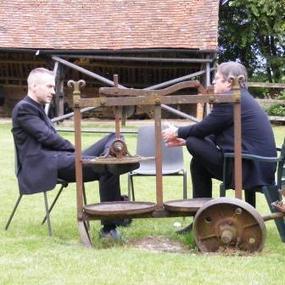"He Said, She Said: Dialog Tags and Using Them Effectively."
by D.M. Johnson
-------------------
Penelope Silver's insight:
Dialogue can trip up even the most seasoned of writers. You can read about it all day long, but until you're actually writing and needing to use dialogue tags (or speech tags), you'll probably skip over this stuff.
Think of these tags as signposts, pointing to who is actually doing the talking. Each tag contains at least one noun or pronoun. (said, asked, whispered, remarked).
Susannah said
the clerk asked
she said and took off her coat
he said, looking sad
As I am writing my current novel, I sail merrily along, adding in some dialogue tags with ease, and getting myself mired in the mud at others.
Do I use he said or she said? Where does that comma go? Should I use a more expressive tag?
One thing to keep in mind: the "he/she said," or "he/she asked" will disappear in the reader's mind, while adding in an expressive tag will make it stick out like a sore thumb.
Read on if you, too, need a college lesson in drumming up the proper speech tag.
***This review was written by Penelope Silvers for her curated content on "Writing Rightly"***
Link to the original article:http://www.scribophile.com/academy/he-said-she-said-dialog-tags-and-using-them-effectively
Via Penelope



 Your new post is loading...
Your new post is loading...











Dialogue can trip up even the most seasoned of writers. You can read about it all day long, but until you're actually writing and needing to use dialogue tags (or speech tags), you'll probably skip over this stuff.
Think of these tags as signposts, pointing to who is actually doing the talking. Each tag contains at least one noun or pronoun. (said, asked, whispered, remarked).
Susannah said
the clerk asked
she said and took off her coat
he said, looking sad
As I am writing my current novel, I sail merrily along, adding in some dialogue tags with ease, and getting myself mired in the mud at others.
Do I use he said or she said? Where does that comma go? Should I use a more expressive tag?
One thing to keep in mind: the "he/she said," or "he/she asked" will disappear in the reader's mind, while adding in an expressive tag will make it stick out like a sore thumb.
Read on if you, too, need a college lesson in drumming up the proper speech tag.
***This review was written by Penelope Silvers for her curated content on "Writing Rightly"***
Link to the original article: http://www.scribophile.com/academy/he-said-she-said-dialog-tags-and-using-them-effectively